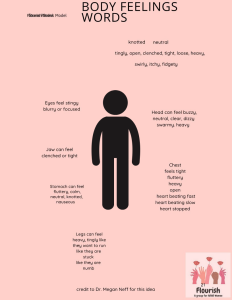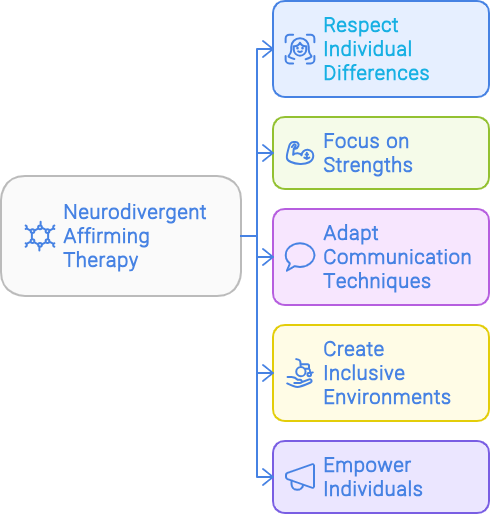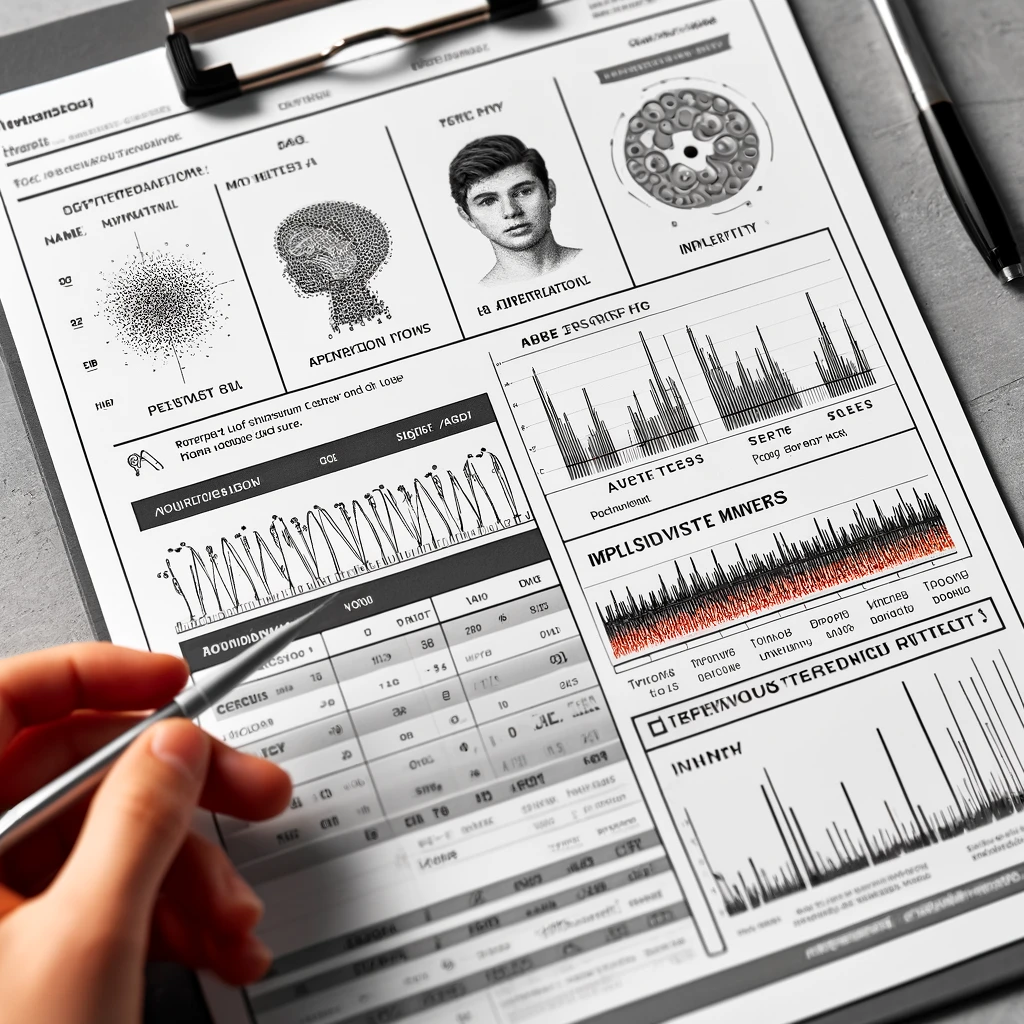
Understanding the Connection Between Alexithymia and ADHD
Understanding the Link Between Alexithymia and ADHD
Alexithymia refers to difficulty in identifying and describing emotions. Initially recognized in the 1970s, it’s now understood as a personality trait impacting both psychological and physical health. Although not classified as a distinct disorder, alexithymia significantly affects emotional processing and regulation in various conditions, including ADHD.

The relationship between ADHD and alexithymia is crucial. Those with ADHD often struggle with emotional regulation, and alexithymia can intensify these challenges, complicating social interactions and emotional management.
What is Alexithymia?
Alexithymia is characterized by:
- Difficulty recognizing and expressing feelings: People often confuse emotions with physical sensations.
- Limited introspection: Challenges in engaging in self-reflection or understanding emotions.
- Concrete thinking: A focus on literal, external events over internal emotions.
- Externally oriented thinking: Prioritizing external experiences, leading to low self-reflection and emotional awareness.
These traits make emotional management difficult, particularly in individuals with ADHD.
Symptoms of Alexithymia
Key symptoms include:
- Trouble identifying and expressing emotions: Often confused with physical sensations.
- Limited introspection: Difficulty in self-reflection or understanding emotions.
- Concrete thinking: Preference for literal over emotional reasoning.
- Externally oriented focus: Prioritizing external over internal experiences.
These symptoms complicate emotional regulation and social interactions, especially when paired with ADHD.
ADHD and Alexithymia
How Common is Alexithymia in Individuals with ADHD?
Alexithymia is notably more common in people with ADHD compared to the general population. Studies show that around 22% to 41% of adults with ADHD exhibit alexithymic traits, compared to only 4% in those without ADHD. This suggests a strong correlation between the two conditions, emphasizing the need for targeted emotional support.
Can Adhd cause Alexithymia?
While ADHD doesn't directly cause alexithymia, the emotional dysregulation associated with ADHD can contribute to difficulties in identifying and expressing emotions, which are key features of alexithymia. This overlap complicates emotional awareness and regulation for adhd people who have both.
ADHD, Alexithymia, and Emotional Regulation Difficulties
ADHD often brings challenges in managing emotions, which are intensified by alexithymia. Individuals with both conditions may experience intense emotions that are hard to regulate, leading to impulsive reactions and difficulties in maintaining emotional balance. These struggles can negatively impact relationships, work, and overall well-being.
Individuals with alexithymia frequently struggle to express their emotions clearly, leading to misunderstandings and communication challenges. When combined with ADHD, these difficulties become more pronounced, making it essential to develop strategies for better emotional expression and communication.
Personal Experiences with ADHD and Alexithymia
Living with both ADHD and alexithymia presents unique challenges. Many individuals report difficulty in understanding their own emotions, leading to feelings of frustration and isolation. These challenges can impact personal and professional relationships, making it essential to seek support and develop strategies for emotional awareness.
Challenges in Social Relationships
Alexithymia can lead to difficulties in social interactions, particularly in those with ADHD. The inability to express emotions clearly can cause misunderstandings and strain relationships. Developing an understanding of the differences in communication skills that may exist and practicing empathy ( towards the neurodivergent person) can help bridge these gaps and improve social connections.
The Role of Impulsivity in ADHD and Alexithymia
Impulsivity, a core symptom of ADHD, can exacerbate the challenges posed by alexithymia. Quick, impulsive reactions often bypass emotional processing, making it harder for individuals to identify and understand their emotions. Managing impulsivity through strategies like mindfulness and behavioral interventions can improve emotional regulation.
Therapy Options for Alexithymia and ADHD
Therapy is a crucial component in managing the emotional challenges associated with both alexithymia and ADHD. The following therapeutic approaches can be particularly effective:
- Cognitive-Behavioral Therapy (CBT): CBT is a well-established approach that helps individuals identify and challenge negative thought patterns that contribute to emotional dysregulation. For those with alexithymia, CBT MUST focus on enhancing emotional awareness by teaching techniques to recognize and label emotions, making it easier to understand and express feelings. In ADHD, CBT also addresses self advocacy and self accommodation which will help with impulsivity and inattention, helping individuals develop better coping strategies for everyday challenges.
- Mindfulness-Based Therapy: Mindfulness practices involve paying attention to the present moment without judgment. This type of therapy can be highly beneficial for individuals with alexithymia and ADHD, as it encourages greater awareness of internal states, including emotions and physical sensations. Regular mindfulness exercises can help reduce impulsivity and improve emotional regulation by allowing individuals to pause and reflect before reacting.
- Dialectical Behavior Therapy (DBT): Originally developed for borderline personality disorder, DBT is also effective for managing emotional dysregulation in alexithymia and ADHD. DBT combines CBT techniques with mindfulness practices and focuses on teaching skills in four key areas: mindfulness, distress tolerance, emotional regulation, and interpersonal effectiveness. These skills help individuals better understand and manage their emotions, respond to stress more effectively, and improve relationships.
- Supportive Psychotherapy: This approach provides a safe, non-judgmental space for individuals to explore their emotions and experiences. For those with alexithymia, supportive psychotherapy can focus on helping individuals articulate their feelings and improve emotional communication. It’s particularly useful in building a therapeutic alliance that encourages self-exploration and emotional growth.
- Interoceptive Awareness Training: Interoception is the ability to sense internal bodily states, such as hunger, heart rate, or emotional arousal. For individuals with alexithymia, improving interoceptive awareness can help bridge the gap between physical sensations and emotional experiences. Therapies that include interoceptive awareness training often incorporate mindfulness, biofeedback, or body-focused techniques to enhance the connection between body and emotion.
- Group Therapy: Participating in group therapy can provide valuable social feedback and help individuals with alexithymia and ADHD learn from others’ experiences. Group therapy sessions often focus on improving emotional communication and understanding in a supportive environment. The shared experiences within the group can foster a sense of connection and reduce feelings of isolation.
- Art and Expressive Therapies: Creative therapies, such as art therapy or music therapy, offer non-verbal ways to express and explore emotions. These therapies can be particularly effective for individuals with alexithymia, as they bypass the need for verbal articulation and allow emotions to be expressed through creative mediums. This can help in gradually improving emotional awareness and expression.
By combining these therapeutic approaches, individuals with alexithymia and ADHD can make significant progress in understanding, managing, and expressing their emotions, leading to improved mental health and overall quality of life.
Strategies for Improving Emotional Awareness with ADHD
Coping Strategies for Alexithymia and ADHD
Managing the challenges of alexithymia and ADHD requires targeted strategies that can enhance emotional awareness, communication, and self-regulation. Here are some effective coping strategies:
- Emotion Labeling and the Feelings Wheel: Developing the ability to name and differentiate emotions is crucial. The Feelings Wheel is a helpful tool that visually categorizes a wide range of emotions. By regularly referring to the wheel, individuals can improve their emotional granularity—the ability to distinguish between subtle emotional states, leading to a more precise understanding and expression of feelings.
- Emotional Granularity Exercises: Emotional granularity involves recognizing and labeling emotions with greater specificity. Practicing this skill can help those with alexithymia and ADHD by expanding their emotional vocabulary. Exercises might include journaling with a focus on describing feelings in detail or using the Feelings Wheel to identify nuanced emotions throughout the day.
- Mindfulness Practices: Mindfulness helps increase awareness of both emotions and physical sensations associated with them. Techniques such as mindful breathing, body scans, and meditation encourage individuals to observe their thoughts and feelings non-judgmentally, helping to reduce impulsive reactions and improve emotional regulation.
- Interoceptive Awareness Training: Interoception is the ability to sense internal bodily states like hunger, heartbeat, or the physical sensations that accompany emotions. Enhancing interoceptive awareness through mindfulness or biofeedback can help individuals with alexithymia connect physical sensations to emotions, fostering greater emotional clarity.
- Routine Emotional Check-Ins: Setting aside time each day for emotional check-ins can gradually improve emotional recognition. These check-ins can involve asking specific questions like, “What am I feeling right now?” or “What triggered this emotion?” Consistent practice helps build the habit of tuning into emotions and identifying them as they arise.
- Social Support Networks: Strong social connections provide essential emotional support. Engaging with friends, family, or support groups allows individuals to share experiences and receive feedback, aiding in the understanding and processing of emotions. Open communication about the challenges of alexithymia and ADHD is key to fostering empathy and support.
- Physical Activity: Regular exercise improves mood, reduces anxiety, and enhances emotional well-being. For those with ADHD, physical activity can also help manage hyperactivity and impulsivity. Activities like yoga, running, or swimming combine physical movement with mindfulness, promoting both physical and emotional regulation.
- Structured Daily Routines: Consistent daily routines help manage ADHD-related impulsivity and inattention while providing a stable framework for practicing emotional regulation strategies. This structure can include scheduled times for mindfulness, exercise, meals, work, and relaxation, creating a balanced environment.
- Creative Outlets: Engaging in art, music, or writing offers non-verbal ways to express and explore emotions. Creative activities can serve as a bridge to understanding and communicating emotions that are challenging to articulate through words, especially for those with alexithymia.
- Professional Support: Regular sessions with a therapist knowledgeable about both alexithymia and ADHD can provide tailored strategies and support. Therapy offers a safe space to explore emotions, practice new coping skills, and receive guidance on managing daily challenges.
By integrating these strategies into daily life, individuals with alexithymia and ADHD can improve their ability to recognize, manage, and express their emotions, leading to better relationships and a higher quality of life.
Association with Other Psychiatric Disorders
Alexithymia is often linked to other psychiatric disorders such as depression, anxiety, eating disorders, and addiction. This overlap can complicate treatment and requires a comprehensive approach that addresses both emotional awareness and the underlying mental health issues.
Is there a test for alexithymia?
There sure is. Toronto Alexithymia Scale (TAS-20): This is the most widely used instrument for assessing alexithymi It's a self-report questionnaire consisting of 20 items that individuals rate on a 5-point Likert scale. DO you want to take it? You can right here.
Conclusion
Alexithymia and ADHD together create a complex emotional landscape that requires targeted strategies and therapeutic interventions. Understanding the connection between these conditions is essential for effective management and overall well-being.







